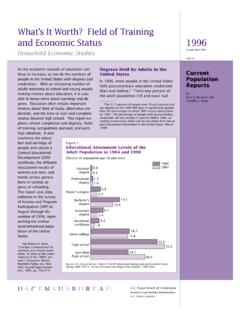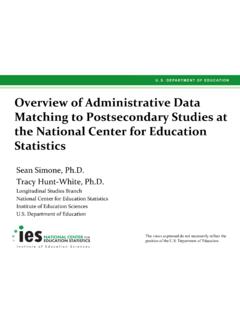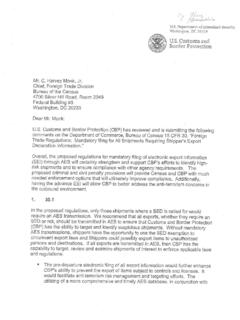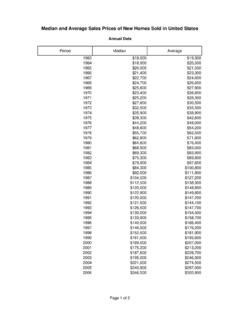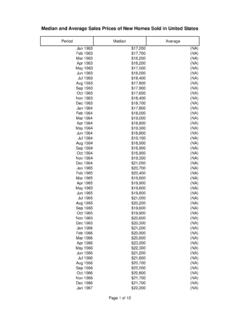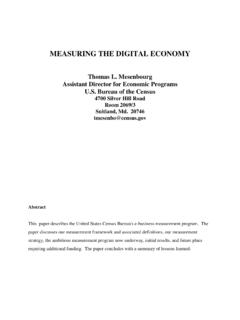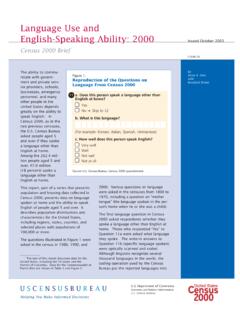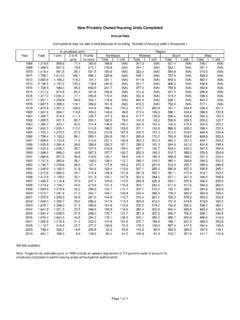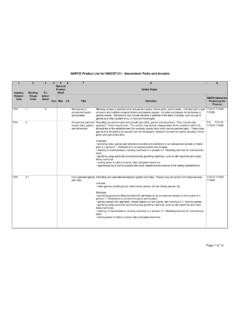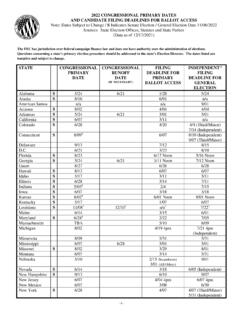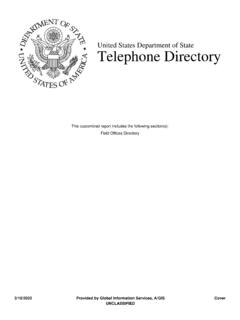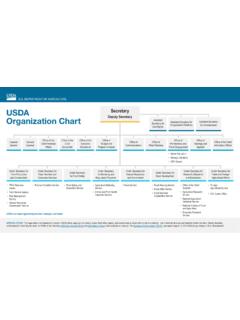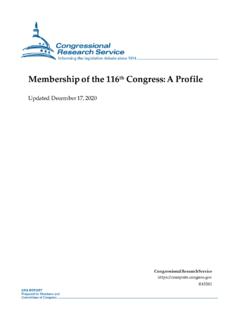Transcription of Who Votes? Congressional Elections and the American ...
1 Who Votes? Congressional Elections and the American Electorate: 1978 2014 Population CharacteristicsBy Thom FileIssued July 2015P20-577 INTRODUCTIONV oting is among our most fundamental domestic responsibilities and important civic opportunities. Without free and open Elections , American democracy would not exist. Maintaining and improving our system of Elections requires not only documenting election results, but also understanding the composition of America s electorate, both historically and presently. Since 1964, the Census Bureau has fielded the Voting and Registration Supplement to the Current Population Survey (CPS) every 2 years.
2 Generally speak-ing, national American Elections fall into two catego-ries: Elections where voters decide on the office of the President and Congressional seats, and Elections where Congressional seats are the highest offices decided. To avoid confusion with presidential Elections , the follow-ing report refers to nonpresidential year Elections as Congressional Elections . Election results and vot-ing patterns tend to vary between these two types of Elections (specifically, voting and registration rates are lower in years with Congressional Elections only), and the majority of this report will focus on Congressional election years only (2014, 2010, 2006, etc.)
3 In addition to the requirement that individuals be at least 18 years old, voters in national Elections must also be citizens. Although the Census Bureau has col-lected voting and registration data since 1964, the CPS has gathered citizenship data only since 1978. Account-ing for citizenship status provides a more accurate reflection of the population eligible to vote; therefore, the estimates presented and discussed throughout this report are calculated using the voting-age citizenComparing CPS Voting Estimates to Official ReportsThe data in this report are based on responses to the November CPS Voting and Registration Supplements, which survey the civilian noninstitu-tionalized population in the United States.
4 Voting estimates from the CPS and other sample surveys have historically differed from those based on admin-istrative data, such as the official results reported by each state and disseminated collectively by the Clerk of the House of Representatives and the Federal Election Commission (FEC). In general, vot-ing rates from the sample surveys such as the CPS are higher than official results (Bauman and Julian, 2010; De Bell, et al., 2015). Potential explanations for these differences include misreporting, problems with memory or knowledge of others behavior, and methodological issues related to question wording, method of survey administration, and nonresponse.
5 Despite these issues, the Census Bureau s November supplement to the CPS remains the most comprehen-sive data source available for examining the social and demographic composition of the electorate in federal Elections , particularly when examining broad historical trends for Census Bureaupopulation and go back as far as , 2 Readers interested in earlier years can utilize historical CPS voting estimates calculated regardless of citizenship status. These products are available at < /socdemo/voting/publications /p20 >.This report s first section, Historical Turnout in Congressional Elections , 1978 2014, presents reported turnout rates, both overall and by race, Hispanic origin, and age, for each Congressional election year from 1978 to the most recent elec-tion held in second section, Composition of the Electorate in Recent Elections , 2004 2014, presents breakdowns of the voting popula-tions in the last three Congressional and presidential election cycles, with a focus on race, Hispanic origin, and age.
6 Data are presented for both presidential and congres-sional election years, primarily to determine whether there have been electoral composition changes depending on the type of From 1978 to 1992, citizenship status was asked about in the CPS Voting and Registration Supplement. Beginning in 1994, the basic CPS included a question about citi-zenship status, meaning that the supplement no longer needed to ask about this topic. 2 Removing noncitizens from the voting-eligible population increases voting rates, as the population base for calculating the rates becomes smaller, while the number of people who report voting does not Federal surveys now give respondents the option of reporting more than one race.
7 Therefore, two basic ways of defining a race group are possible. A group such as Asian may be defined as those who reported Asian and no other race (the race-alone or single-race concept) or as those who reported Asian regardless of whether they also reported another race (the race-alone or in-combination concept). This report shows data using the first approach (race alone). Use of the single-race population does not imply that it is the preferred method of presenting or analyzing data. For further information, see the 2010 Census Overview of Race and Hispanic Origin: 2010 (C2010BR-02) at < /library/publications/2011/dec >.
8 The third section, A Closer Look at Race, Hispanic Origin, and Age, looks at how voter turn-out intersects with demographic characteristics in an effort to better understand the dynamics of recent Congressional electorates. By comparing a subpopulation s share of the voting population to their share of the eligible population, an assessment can be made concern-ing how a given subpopulation has participated in the 2006, 2010, and 2014 Congressional report s final section, Traditional and Alternative Methods of Voting, presents results related to voters and their reported method of casting ballots, specifi-cally whether they voted early in person or through the mail.
9 These questions were first asked in the 1996 CPS, and results are presented for the period of 1996 2014. In this section, data are once again included for both presidential and Congressional election years, primarily to better understand how voting methods vary between dif-ferent types of VOTING Voting rates: Voting rates represent the number of voters relative to a given population or subpopulation. For example, in this report overall voting rates are calculated by divid-ing the total number of reported voters by the total number of eli-gible voters ( , citizens who are at least 18 years old) (Figure 1).
10 Voting population: This is the estimated number of people who reported voting. In this report, this population will occasionally be referred to as the electorate. Voting-age citizens: In the United States, only native-born or natu-ralized citizens can vote legally in Elections . While the Census Bureau has collected voting and Figure Among the Total, Citizen, and Registered Voting-Age Populations: 2014 Source: Census Bureau, Current Population Survey, November nonvotersVoting population(Population 18 and older, in thousands)Registered million( voted)Citizen million( voted)Total million( voted)19,93334,65893,03292,25134,65893,0 3247,59392,2512,32292, Census Bureau 3registration data since 1964, the CPS has gathered citizenship data for Congressional voting only since 1978.
